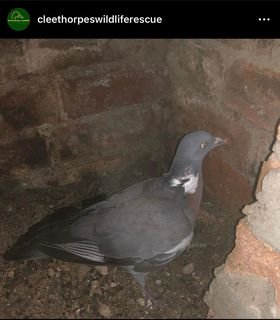Hearing any animal stuck in a chimney is distressing for both the animal and the finder, not only is choosing to take no action cruel, it can pose a health hazard (and even a fire hazard) if the bird passes away.
So what can you do?
This all depends on what is at the bottom of your chimney…
Open fireplace:
Start by trying to tempt the bird out under its own steam. Open the windows in the room so that the bird can sense the fresh air. Pull back the curtains, turn on the light, and shine a torch into the fireplace so that the bird can see and hopefully head towards the light. It’s vital that you leave the room and keep the area totally quiet so that the bird feels safe to leave the chimney. Be patient – this may take a few hours.
If you have no luck with this, try to look up the chimney using your torch and get an idea of where in the chimney the bird is. Many chimneys have a ledge a short way up and birds often settle there. They can then usually be reached and removed quite easily by hand. If the bird is further up and cannot be reached or tempted down then the next step is to call a chimney sweep who will have telescopic tools with which they can either push the bird back up or encourage them down the chimney. - Credit: Helpwildlife.co.uk 04/03/23
ENSURE CATS ARE NOT IN THE ROOM!!
GAS FIREPLACES:
Top of the list for the most difficult rescues for wildlife organisations!
For any fitted/gas fireplaces you’ll need to call out an engineer with the relevant qualifications to assist you to remove the fireplace - This is not something rescues have the knowledge or insurance to do for you.
Once the fireplace has been removed, follow the guidance for open fireplaces, if you still have no luck or you’ve captured the bird and have any concerns with its condition such as: covered in soot, skinny, not attempting to fly or it’s been in the chimney for more than 48 hours, it’s time to contact a rescue.
Sealed Chimneys:
Sealed chimneys are often a little easier, they require a little bit of DIY but may sometimes need you to call a tradesperson if you’re unsure.
Most sealed chimneys are simply covered with thick card-like materials at the base, some are even accessible in case access is needed for situations just like this!
Should you be unsure, you should always contact a qualified tradesperson to help!
Should I call a rescue?
In most cases, if the bird has been in a chimney for a short period of time, it will be suitable for release once out of the chimney, however, should any of the following apply, you should contact a local rescue:
Stuck for over 24 hours (ADVICE)
Stuck for over 48 hours (Almost certainly admission into rescue)
visible injury or illness
Loss of feathers (mostly primary flight feathers)
Covered in soot or other contaminants
Lack of flight/exhaustion
Note: If you have any doubt about what you’re doing, you should always contact a registered tradesperson to help you, never attempt to remove walls or fireplaces on your own, especially if it’s a gas fireplace. This advice is for guidance only, if in doubt, seek further advice!

